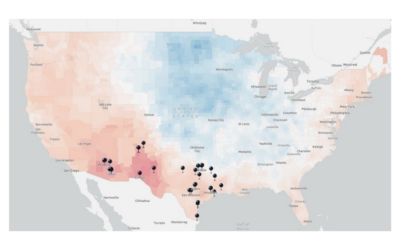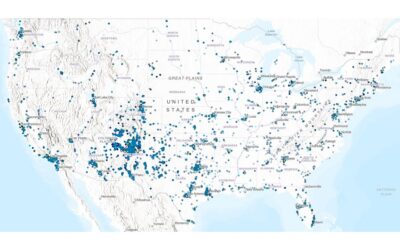Zoos and aquariums all over the United States are being awarded new and increased public funding by their cities, counties, and states. This support can come in many forms and sometimes comes with strings attached.
Getting this funding can seem like an insurmountable task, especially in the current political climate. But like so many other challenges, by becoming educated on how to navigate the path, arming yourself with a strategic approach, and engaging help at the right time, your organization can become a beneficiary.
Zoo Advisors is proud to announce we are welcoming Ben Lewinger to our team, a new associate with special expertise in shepherding non-profits through this daunting landscape. We recently took the opportunity to chat with Ben on the topic.
Zoo Advisors (ZA): First off, can you tell me a little bit about yourself?
Ben Lewinger (BL): I’m a religion teacher by training, spent 15 years in the nonprofit sector, on the organization and foundation side before moving into a consulting role. My practice is right in the sweet spot of public affairs, marketing and communications, and brand positioning.
I’ve been involved in dozens of campaigns, candidate and ballot measures, including a tax increase for the Albuquerque BioPark (which my family takes advantage of often) and the Reid Park Zoo in Tucson, AZ. I’m happy to call New Mexico my home again after stints in Boston, Honolulu, and Taipei, Taiwan.
ZA: That’s quite a career path. How did you find yourself becoming interested in the zoo and aquarium world?
BL: I’ve done a lot of land and resource conservation work, and I’m particularly interested in animal conservation. This is a core function of zoos and aquariums that’s relatively misunderstood and underappreciated.
After being involved in several candidate campaigns – everything from congress to legislature to governor – I’ve decided that animals and families are far more interesting (and worthy) of supporting.
A community’s zoo is an interesting microcosm of its respective community. I’ve learned a lot about people and what they value by getting to know their local zoos. From education to conservation to acting as a trustworthy place to spend time with family, zoos and aquariums across the country fulfill a critically important role. I feel there’s a moment right now wherein zoos are becoming more and more important, and I want to be part of that movement.
ZA: We fully concur. It’s a critical moment for the profession right now. From your perspective, how have things changed in recent years in terms of what you’re seeing related to public funding initiatives for cultural attractions?
BL: Like all funding, it’s incumbent on zoos to be better advocates for their own existence. Where a community may have automatically supported a measure fifteen years ago, voters today are savvier and interested in knowing exactly where their money goes. Zoos and aquariums are forced to better tell their own story, know their key supporters, and do more with less. I firmly believe there’s opportunity here for zoos to better connect with their communities and give people an opportunity to double down and support institutions that make their lives and communities better. The opportunity is realized in a deeper self-awareness for zoos to communicate what they do and what the world would look like if they weren’t able to fulfill their mission.
ZA: Are zoos doing a good enough job of telling their story?
BL: The profession overall desperately needs a global rebrand to clarify, connect, and inspire regular people across the country. We need to foster future generations of conservation activists to be caretakers and help shape the future of what zoos do. There’s an infinitely decreasing attention span. We need to reignite the passion of individuals seeing and interacting with other animals in real time.
ZA: That’s good advice that is applicable to all zoos. Should all zoos and aquariums consider seeking public funding, or do you see it as a possibility only for a certain subset?
BL: Every zoo and aquarium should look closely at the options for public funding. Every market is different, and there’s important research and analysis that goes into the go/no-go decision to get on the ballot. Everything from examining similar measures historically and in other markets to public opinion research to understand where the zoo sits with the electorate. All of this should happen before anyone publicly discusses the possibility of going after public funding. It’s a road paved with many bumps and obstacles but winning a tax increase or a bond or levy could be what makes it possible for a zoo to execute a master plan or even keep its doors open.
ZA: What are the primary public funding vehicles that zoos and aquariums should be aware of?
BL: There are three main categories of public funding – tax increases, bonds, and levies. Bonds are notes offered to the public which must eventually be repaid with interest. Levies are taxes imposed on personal properties. Tax increases, like a gross receipts tax, for example, is a financial charge on goods and services that can go towards a specific item, like operational expenses for a zoo. We often also see a sunset on tax increases, so there’s a good sense on what the total value would be after 10 or 15 years, for example.
ZA: Do you see any one of those vehicles as being “most favorable” to a zoo or aquarium?
BL: It’s tough to make a broad claim like that. If bond measures and levies have a good history of winning in the past in a specific community, and there aren’t other competitive measures up at the same time, that could be the best path forward. If a zoo is in a critical situation but is well-positioned with a broad swath of the community, then a tax increase may be the best option. It really goes back to ensuring a high degree of self-awareness for a zoo/aquarium, and a heightened understanding of the fears and motivations of a community.
Timing is also absolutely critical. If there is anything to emphasize, it’s that a decision to get on the ballot for any type of public funding is a decision that should not be taken lightly, and not without exhaustive assessment of the situation.
ZA: The process of going through a funding initiative is daunting and there are a lot of moving parts. Are there specific parts of the process that organizations have the most trouble managing or finding their way through?
BL: Going back to campaigns 101, I think the biggest potential disasters come in not understanding and being ready to inoculate against opposition – against the naysayers. Also, the ballot language, to the degree that a zoo or aquarium can control it, has the potential to sink an otherwise worthy measure. Ill-planned campaigns may have to draft ballot language at the onset, before significant planning and messaging exercises.
Unfortunately, for people who see nothing other than the ballot, confusing ballot language can cost votes and potentially hamper efforts. It’s important to bring in people you trust who are familiar with how to run a successful campaign.
Finally, you need be sure nobody is ignored. The business community, for example, is a group that ballot measures often fail to engage with until the end of a campaign. Business leaders are people who care about the community, who have kids and grandkids who love the zoo, and who can lend themselves to an authentic discussion about why zoos matter.
ZA: For organizations who haven’t really considered public funding as a possibility, what can they do to get the ball rolling?
BL: To the extent possible (considering capacity and expertise), look at how measures for zoos, aquariums, and other cultural attractions have fared in your and similar markets. Search for media, request voting records from clerks’ offices, and begin to put together a potential picture of what a measure could look like for your zoo or aquarium. Conduct focus groups—ask people why the zoo matters to them, what they would be willing to do to make the zoo better. Finally, when it’s time, call in the experts to guide the discussion. The process to determine viability for winning a public funding measure could take anywhere from nine to 24 months, so prepare for a significant investment in time and resources to determine what’s right, and be prepared to put something off if the timing doesn’t work or if the voters don’t have the appetite.
ZA: Any parting words of wisdom you can share on strategy or timing?
BL: Unless your zoo has just won a measure, the time to start looking at the possibility of public funding is yesterday. Remember that it’s not only zoos and cultural attractions competing for attention and dollars. Your organization provides a lot for your community, and we’re often too busy to toot our own horns, but the time is now.
The path to public funding can be a long, nerve-wracking journey. The process is not only illuminating for zoos and how they operate, but the potential payoff is game-changing.
As a firm associate, Ben will be participating in a panel discussion facilitated by Zoo Advisors Vice President Zachary Winfield on this topic at the 2019 AZA National Conference in New Orleans on Wednesday, September 11 from 8:00AM to 9:00AM. We hope to see you there!





